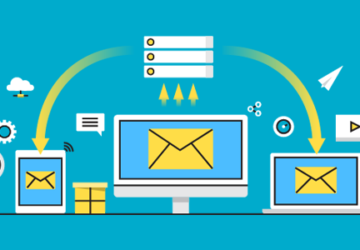Fintech is one the most popular technology sectors considered around the world.
Today, people in different domains are using fintech apps almost every single day for different purposes, right from mobile banking transactions to online shopping.
The fintech vertical has witnessed exquisite growth of digital transactions crossing $10.52 trillion in 2025.
However, it isn’t easy to build an app for financial services that succeeds.
This write-up is for those who want to create a great fintech application and explore the domain of tech amenities for the financial industry.
We’ll discuss how to create a fintech app that is successful in 2023 and help you get moving with it.
Let’s start.
Why You Should Invest In Fintech Application?
In the last few years, digital finance companies have received a lot of investment and funds. There is a growing number of startups around the globe, and entrepreneurs are looking to start businesses that offer protected financial transactions. Mobile literacy and online shopping have changed from being just a store to a big business. The mobile penetration in almost all sectors has led to a significant increase in the number of online services that offer financial transactions.
Fintech mobile apps are more reliable, secure, and quicker than traditional financial transactions due to the strict framework and stricter guidelines. It’s worth noting that the legalization of cryptocurrency in many countries has made fintech apps development more competitive. This makes it a great time to create fintech mobile applications.
Fintech applications gained an additional boost after the global pandemic which ravaged the globe and caused it to stand still for quite some time. Although the habit of completing personal and professional tasks online was once imposed upon users, it has become a cherished habit and hobby for nearly everyone.
If you are thinking about investing in fintech applications, then you have certainly landed on the right page. The below segment can certainly help you with the steps to be followed as specified by mobile app developers. Check it out:
Steps To Develop Fintech Applications As Per Your Custom Needs
It can be difficult to understand the application development of financial solutions. To make it easier, we have developed an organized list that outlines all of the steps as stated by the experienced developers in the business. Take a look at the following:
Step 1: Selecting A Niche
Before you begin the process of developing financial software, it is important to identify a niche. It may take time and effort to find the right niche, but it is essential as it will allow you to make a simple fintech application that can scale. The category selection procedure should include deciding on the type of fintech app and the best method to build it. The intended purpose of the app should be considered, such as whether it will be used for crowdfunding, mobile banking, money management, or any other purpose. As and when you have established the goal, it is time to identify the audience and acknowledge their needs. This process will help you create a smooth and efficient outcome of development.
Step 2: Peer Research
This is the stage in which you need to ensure that the fintech mobile application developer you choose can create something that performs better than the competition. Bu, before proceeding ahead with the competition analysis, it is important to do detailed market research about the existing apps in order to determine their strengths and weaknesses. You can identify the weaknesses in financial apps of your competitors and develop an application that addresses them. This will provide consumers with a better, more seamless experience. This will help you gain an edge over your competitors and expand your consumer base.
Step 3: Regulations
Fintech application development is more strict than other applications. Compliance is much more important. In this case, it is not enough to adhere to the publication standards for both the Apple App Store and Google Play Store. To identify any possible governing rules, restrictions, or legal requirements, it is important to conduct thorough compliance research based on target market selection. These legal considerations must be identified and any necessary changes made to the development process. It is essential to know what is allowed under the relevant rules and regulations.
A financial software development company must be familiar with the law as it changes when a business moves. You can find important concepts like digital signature certifications and Know Your Customer (KYC) here. This step must be completed thoroughly to prevent non-compliances.
Step 4: Form a team/partnership with the vendor
The two most important components in creating a fintech app are technology and money. A fintech software development company that has the right combination of technology and money is essential to create a reliable, scalable app. If your company does not have a dedicated team of developers who can develop a fintech application, you will need to hire a fintech business. The following people are required to form a development team:
- Frontend developers
- Project Manager
- Backend developers
- Designer
- Business Analyst
- Product Manager
- Quality Assurance Specialist
Your budget, your project requirements and the timeframe you expect to launch your fintech app will all impact how big your team is. If both iOS and Android apps need to be developed, there would be two front-end developers. You can also outsource the creation and maintenance of your fintech app to a trusted fintech development company, but this may lead to higher costs.
Step 5: Technology Stack
To build a financial application that is successful, you need the right technology stack. Depending on the type and features of the application, a variety of technologies and tools are needed for both the front and back ends. Every fintech project is unique and different. Therefore, a custom technological stack is necessary to meet the project’s needs and objectives.
You can use the technology stack to reduce the cost of fintech apps development and speed up their launch by choosing the right one. There are a few technologies that can be used to create fintech apps. These include Java, Swift and Ruby, C# Python, C++ and Kotlin. Swift, Objective C and Java for Android are some examples.
Step 6: Create a Money Model
Before you add functionality to your fintech app, you need to identify potential sources of income. To do this, you must create a monetization plan that focuses on the most valuable streams of income. At the same time, it is important to identify new opportunities for the future.
Step 7: Select MVP features
After market research and competition analysis are complete, you can identify the true purpose of your fintech app and determine the features that should be included. You don’t need to include too many features. Only those that are important, significant, and can increase efficiency, usability and speed of the app should be included.
Features such as chatbots, two-factor authentication and cross-platform compatibility are essential to ensure the app’s success. After your market research has been completed, you will need to decide what features should be included in the MVP. This can be done using the Prioritization Matrix, Pain and Gain Map, and other tools. It is important to gather feedback from the target audience after the MVP version has been released. This will allow you to analyze their behavior and adjust the fintech application accordingly.
Step 8: Cost Estimation
Budget problems in the late stages of development can cause delays. Fintech app development costs are affected by many factors, such as the tech stack, feature selection, platform choice, maintenance and design, project size, testing, etc. It is a good idea for you to do an estimate before you start building a fintech app. This will help you stay within your budget while still meeting the deadlines to develop a fintech app.
It is common to use the hourly rate of developers of fintech apps to calculate the fintech software development cost. Outsourcing the creation of financial apps is a great way to access skilled developers and cutting-edge technology.
Step 9: Make Improvements
It does not mean that a fintech application is finished without further effort. The fintech software development services does not stop because support and maintenance are always needed. Once the fintech app is in the testing phase, customers are surveyed and feedback is taken to improve the application’s design and functionality. As technology advances, so must the procedures and functionality of the application. Users must quickly resolve any problems or challenges they encounter while using the program.
These are the important steps for the maintenance and support of your application:
- To upgrade libraries and third-party service accessible through the application
- To fix the flaws or defects
- To keep the program up-to-date with the latest operating system versions
- To reorganize current code without changing its original functionality
- To verify all security audits and to check the most recent updates
Step 10: Compliance
Like the banking sector in many countries, the fintech industry is well-regulated. The industry must adhere to money laundering policies and consumer data protection laws.
You may need to know the specific regulations for your particular finance app. To ensure security encryption of your financial app, it is important to read every regulation.
You must understand the laws that affect your fintech solution if you plan to offer services in multiple countries. Keep in mind that laws vary from country to country and some countries even issue fintech licenses. Before integrating any compliance into your application, make sure you understand the pros and cons of each. These regulatory laws can also be used to gain trust and attract potential customers for online businesses.
Step 11: Funding Options
There are many funding options available for your financial company. Crowdsourcing, bank loans and venture capital, as well as angel investors and competitions for startups, are all options.
To prove your concept, you will need a minimum viable product (MVP). You can develop an app or software for your target market using the MVP funds. This is how most of the fintech giants today began.
Final Words
Slowly but surely, mobile technology verticals are becoming the new wallet. Fintech apps are replacing traditional banks and insurance companies for consumers. The fintech
The cost of FinTech app development depends on several factors: Technologies used, Project size, Hourly rate of the development team, development time, Design complexity, Number of team members, the deadline The project complexity and size and the hourly rate of FinTech app developers are the most essential factors that influence the FinTech mobile app development services. All you have to do is to connect with the best in the business who can make it easy for you to assist you with the development process as per your expectations and needs.
Author Bio:
Alicia is a technical content writer and is associated with A3logics for over a couple of years. She has been in touch with the Blockchain Development Company and is often found struggling with some unique topics for her upcoming projects. She is often found discussing the latest developments with the technical team. When not working on any of her writing projects, she is either reading any of the Agatha Christie mysteries or busy gardening.








